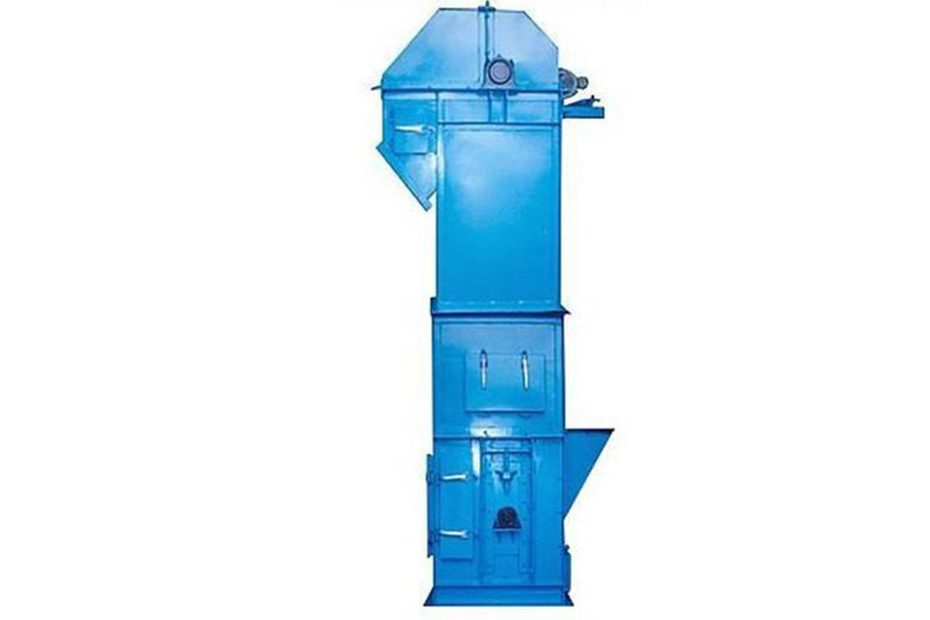The bucket elevator, also known as the bucket conveyor, is a mechanical conveying device mainly used in industries such as grain, oil, feed, fertilizer, and mining to accomplish large vertical transportation of powdery, granular, small bulk, and nonadhesive materials.
The bucket elevator uses a closed loop bucket belt that surrounds and is tensioned around the head and bottom wheels as a traction component. It also uses buckets installed on the bucket belt as material conveying components, which continuously transports materials by the continuous operation of the bucket belt. Therefore, the bucket elevator is a continuous conveyor machine.
The three stages of the working process of the bucket elevator
The working process of the bucket elevator can be theoretically divided into three stages: loading, lifting, and unloading.
Loading Stage
Loading is the process of digging the material by the bucket as it passes through the lower part of the base. The loading process is the first stage of the bucket elevator, where the material enters the bucket elevator from the inlet and then enters the bucket through the pushing of the conveyor chain.
During the lifting process, the bucket along with the conveying chain moves upwards and connects with the upper bucket. The lower bucket fills the material in the next level bucket, which is then transported to the upper bucket through the conveyor chain. This repeated movement transports the material upwards.
According to the loading direction, there are two loading methods: forward feeding and reverse feeding. The reverse feeding method is commonly used in actual applications, where the feeding direction is opposite to the direction of the bucket movement, resulting in a higher filling coefficient.
Lifting Stage
The process in which the material vertically rises with the bucket around the horizontal center line of the bottom wheel to the horizontal center line of the head wheel is called the lifting stage. The lifting process is the second stage of the bucket elevator, and it is essential to ensure that the bucket belt has sufficient tension to achieve smooth lifting and prevent material spillage.
The lifting process refers to the bucket elevator lifting the material to the target position. After the material is transported to a certain height, it enters the body of the lifting machine. The central roller of the lifting machine has a spiral line. As the machine body moves upward, the spiral line goes through the center of the material, then lifts the material to the target position, and the self-weight of the material forms material storage in the feeding slot of the lifting machine’s upper part.

Unloading Stage
The process in which the material leaves the bucket as it passes through the upper half of the head wheel and is unloaded from the discharge port is called the unloading stage. The unloading stage is the third stage of the bucket elevator. When unloading, the material is poured out one by one and guided to the container or conveyor equipment below by gravity.
There are three unloading methods, namely centrifugal, gravity, and mixed unloading. Centrifugal unloading is suitable for materials with good fluidity and scattering; gravity unloading should be applied to materials with high water content and poor scattering; mixed unloading has good adaptability to materials and is commonly used in engineering practice.
When unloading, the bucket elevator needs to control the corresponding position to prevent blockage or uneven discharge of the material.
summary
The working process of the bucket elevator can be divided into three stages: loading, lifting, and unloading. The whole procedure requires a complete control system to ensure ideal performance during transportation. Also, to ensure the long-term operation of the bucket elevator, appropriate maintenance is necessary.
